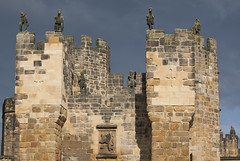Thinking of creating a new patio in your backyard? Need a few backyard patio ideas? Let us help. After a quick brainstorming session, we came up with these five backyard patio ideas that will be sure to please.

Combine Patios and Decks
Landscape Stone Idea
A common, yet still exciting backyard idea is to combine a patio built of stone, brick, concrete or other typical patio materials with a traditional wooden or composite deck. Or try building a wooden decked patio with a gazebo or observation area. This effect makes for a great private area to set up a dining or conversational enclave, really setting your patio apart from the rest!
The Ultimate Outdoor Kitchen
While not one of the cheapest backyard patio ideas, creating agourmet outdoor kitchen will be sure to impress everyone! Think about the perks and advantages of being able to entertain exclusively outdoors without even having to go inside. For the cook, there's a huge variety of grills and ranges specifically designed for permanent patio installation. We're not talking your ordinary everyday charcoal or gas grill here (although there's certainly nothing wrong with that either).
How about an outdoor built in refrigerator or wine cooler? Or design to built in ice pit to chill your favorite beverages on a warm summer night. Oh, and for those cool nights, to get some extra life from your patio, don't forget to add an outdoor patio fireplace. They can be had to burn wood or propane, or you can go all out and have a pro install a gas line foryou.
Old Fashioned Style and Charm
Bring back the Victorian age with a patio that is designed to fit the time period. Porch swings and old fashioned rocker chairs can help to evoke the feeling of a bygone era. Or perhaps you want something a little more modern, but still with a funky retro vibe. Find some old metal rocking chairs at an auction and build in an area for shuffleboard. Eclectic, yet fun backyard patio ideas!Soothing Water Garden
The idea for a backyard patio water garden can be simple to accomplish or can be taken to any level of extremes you desire. Put in a simple patio fountain to create the atmosphere of nature that only trickling water can do. Now combine that with a full blown water garden including a fish pond with a water fall.You decide how far to take this idea...
Nothing Wrong With Turf
For another unique backyard patio idea, think about inverting the whole layout. If you have a small back yard or area for your patio, install edging for your patio, backyard patio made of common materials like brick or stone. This will define the patio.
Then fill in the useable area of the patio with a thick and dense grass turf. This idea is sure to give you the feel of a traditional patio without giving away the luxury of still having grass in your backyard.
5 Backyard Patio Ideas




